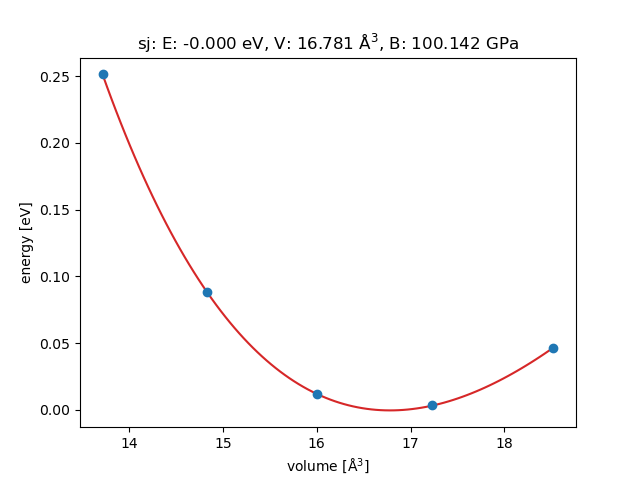Equation of state (EOS)¶
First, do a bulk calculation for different lattice constants:
import numpy as np
from ase import Atoms
from ase.io.trajectory import Trajectory
from ase.calculators.emt import EMT
a = 4.0 # approximate lattice constant
b = a / 2
ag = Atoms('Ag',
cell=[(0, b, b), (b, 0, b), (b, b, 0)],
pbc=1,
calculator=EMT()) # use EMT potential
cell = ag.get_cell()
traj = Trajectory('Ag.traj', 'w')
for x in np.linspace(0.95, 1.05, 5):
ag.set_cell(cell * x, scale_atoms=True)
ag.get_potential_energy()
traj.write(ag)
This will write a trajectory file containing five configurations of
FCC silver for five different lattice constants. Now, analyse the
result with the EquationOfState class and this
script:
from ase.io import read
from ase.units import kJ
from ase.eos import EquationOfState
configs = read('Ag.traj@0:5') # read 5 configurations
# Extract volumes and energies:
volumes = [ag.get_volume() for ag in configs]
energies = [ag.get_potential_energy() for ag in configs]
eos = EquationOfState(volumes, energies)
v0, e0, B = eos.fit()
print(B / kJ * 1.0e24, 'GPa')
eos.plot('Ag-eos.png')

A quicker way to do this analysis, is to use the ase.gui tool:
$ ase gui Ag.traj
And then choose .